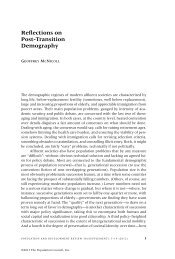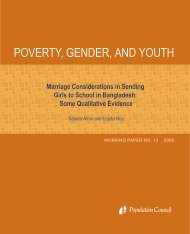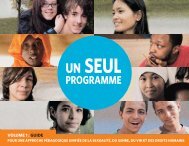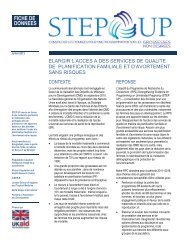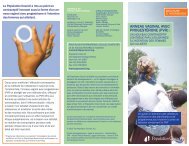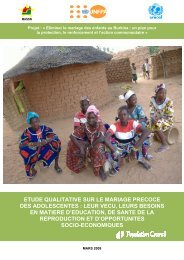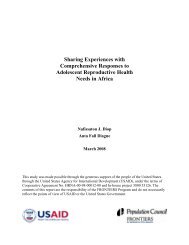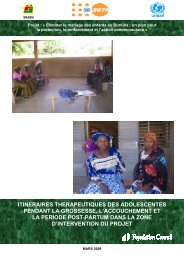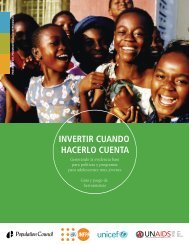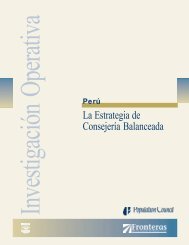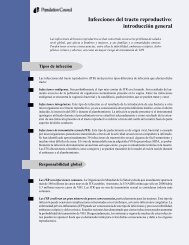Community Health Volunteer's Training Manual - Population Council
Community Health Volunteer's Training Manual - Population Council
Community Health Volunteer's Training Manual - Population Council
Create successful ePaper yourself
Turn your PDF publications into a flip-book with our unique Google optimized e-Paper software.
Exercise 4.1.4<br />
Objective<br />
1. To discuss what to look out for during<br />
home visits<br />
Time: 20 Minutes<br />
Question<br />
1. Discuss the things you look for during<br />
home visits<br />
Box 4.1.5: Things to look out for during home visits<br />
Home Visiting<br />
Instructions to the Facilitator<br />
1. Lead participants to<br />
brainstorm the ‘things to look<br />
out for during home visits”.<br />
Compare their answers with<br />
those in Box 4.1.5 and fill in<br />
the gaps.<br />
The volunteer should observe the following:<br />
1. The state of the house - whether the house is clean and well ventilated<br />
2. The kinds of food that the family eats - there may be some peels and other things lying<br />
around – use of senses – sight, hearing and smell<br />
3. The health of the mother – whether she looks tired and anaemic, or rested and healthy<br />
4. Support of the husband - whether the husband is helpful<br />
5. ITN usage – do they sleep under ITNs? If there is a newborn, do the newborn and its<br />
mother sleep under an ITN? Seek permission to see if ITN has been properly hung<br />
6. State of other children – if there are other children around, do they look healthy or<br />
malnourished. Look out for sick children/people<br />
7. Inspect clients record cards – weighing cards<br />
8. Any other significant health issues observed e.g.<br />
- Mental health<br />
- HIV & AIDS<br />
- Handicap (physical challenges)<br />
- TB<br />
- Abandoned and neglected children<br />
9. The number and spacing of children.<br />
Materials used in Home visiting<br />
In a planned home visit, a volunteer should always carry a portable bag containing at least<br />
the items listed in Table 4.1.1. These are the minimum list of items that will enable the<br />
volunteer to perform his or her work effectively.<br />
Table 4.1.1. Materials used in home visits<br />
Materials for home visits Rationale<br />
SCHOOL BAG (KNAP SACK) For carrying the contents of the bag<br />
DRESSING AND PLASTER/BANDAGE To give first aid<br />
RAIN COAT For protection from the rain<br />
CUP & SPOON For preparing Oral Rehydration Salts<br />
185



